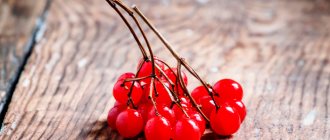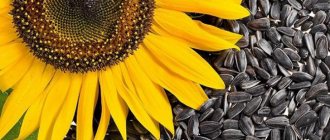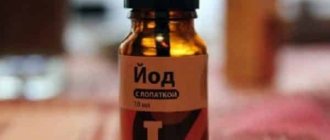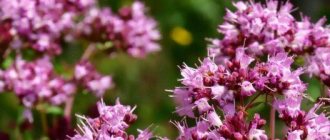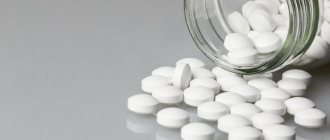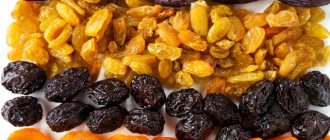Table of contents
- What are the benefits of horse chestnut?
- For what diseases is horse chestnut used?
- Horse chestnut recipes
The horse chestnut already shows off with its leaves on long petioles. The large leaves of this tree attract attention with their unusual appearance: they are palmate and actually somewhat resemble open palms. This tree can reach a height of even 30 meters.
In May, chestnuts bloom with magnificent “candles” consisting of bell-shaped white and pink flowers. Each cone-shaped candle is up to 30 cm in height, and in turn consists of 20–50 flowers.
Horse chestnut fruits are green in color and have many thorns. These boxes contain a nut, which is popularly called a chestnut. The nut seed is shiny, brown, 2–4 cm in diameter. The fruits ripen in late August-September.
Horse chestnut is a forage plant - according to legend, horse chestnuts were brought to Central Europe by the Turks as feed for horses. The pulp of this nut is white and tender.
The homeland of horse chestnut is the southern part of the Balkan Peninsula: Albania, Greece, Macedonia, Serbia, Bulgaria. There this tree grows in the forests.
In Russia, horse chestnut is widely cultivated in the European part of the country for decorating parks and landscaping urban areas.
Flowers, fruits, leaves, bark, nut shells and even the roots of horse chestnut have healing properties.
Flowers and leaves are collected in May. Seeds (nuts) are harvested from the beginning of September. The bark is harvested from the beginning of October.
Medicinal properties of chestnut
The healing properties of horse chestnut for varicose veins are due to its composition. Due to the presence of escin, a triterpene saponin, horse chestnut fruit can be used to thin the blood. They also contain other useful substances: esculin, which belongs to a number of coumarins, kaempferol from the group of flavonoids, tannins, rutin. Read more in the article “Chestnut fruits. Description, application, medicinal properties and contraindications.”
Thanks to the active substances, the use of horse chestnut for the feet has a whole range of beneficial effects:
- activates metabolic processes;
- relieves inflammation, swelling and heaviness from the legs;
- strengthens the walls of blood vessels;
- reduces capillary permeability;
- expands the lumen of blood vessels;
- prevents the formation of cholesterol plaques;
- promotes the resorption of blood clots;
- accelerates the healing of trophic ulcers;
- prevents the occurrence of rosacea.
These same properties make it possible to use horse chestnut fruits in the treatment of hemorrhoids.
According to numerous reviews, horse chestnut for varicose veins in 85% of cases has a noticeable effect after 2 weeks of use.
Buy chestnut (fruit) on our website
Important!
The fruits of horse chestnut for varicose veins will have an effective effect only in the initial stages of the disease. In advanced cases, they can only alleviate the general condition.
The plant is also effective for other diseases. For example, the fruits of horse chestnut in the treatment of sinusitis will clear the sinuses and make breathing easier, and the use of horse chestnut for men will help get rid of prostatitis and prostate adenoma.
A little about the disease
Prolonged standing on your feet, a sedentary lifestyle, endocrine diseases, poor diet, bad habits, excess weight, and pregnancy contribute to the formation of disturbances in the venous vessels.
Varicose veins
Great importance is given to heredity. If one of the parents had varicose veins, then pathological changes in the vessels in the form of weakness of the vascular wall and disruption of the valvular system of blood vessels will most likely occur in children.
Blood through the veins returns from the legs to the heart against the force of gravity. The valve apparatus contributes to this. An increase in the diameter of the superficial venous vessels of the lower extremities with a large volume of blood leads to insufficient closure of the valve leaflets in the veins.
This leads to a pathological return of blood to the vessels of the lower extremities and even greater accumulation of it. The result of this is the formation of wide veins, varicose veins, swelling of the legs, and pain. In addition, impaired blood supply leads to impaired tissue nutrition and trophic ulcers.
Therapeutic and surgical methods are used in the treatment of this disease. Moreover, surgical intervention is more effective in the stage of pronounced changes.
In order to improve the condition of blood vessels, relieve pain and avoid surgical intervention, various methods have been used since ancient times. Some were rejected, some were questioned. But others turned out to be most effective.
Horse chestnut has also shown itself to be such a medicinal folk remedy.
Treatment of varicose veins with chestnut alcohol tincture
To prepare a tincture for oral administration, peel 100 grams of fruit and chop it. Place the resulting slurry in a glass jar, pour a glass of alcohol and leave for 2 weeks to infuse in the dark. Drink chestnut for varicose veins in alcohol three times a day, 30 drops, diluting with water.
Alcohol can be replaced with vodka. In this case, proceed similarly to the previous chestnut recipe for varicose veins, but increase the amount of vodka to a liter.
Alcohol tincture can also be used externally. According to the recipe for rubbing chestnuts against varicose veins, 100 grams of the fruit is poured with 300 milliliters of vodka and left for 14 days. The prepared tincture is rubbed onto the thighs, legs and ankles. You can also use the product as a compress. The duration of treatment for varicose veins with horse chestnut is a month. After 2 weeks, if necessary, therapy can be repeated. On our website you can find other recipes for chestnut fruit infusions, as well as read reviews about chestnut fruits.
Important!
You should not collect medicinal raw materials yourself. If the collection and drying rules are not followed, it will not have the desired effect. It is better to buy already prepared raw materials: prices for chestnut fruits are quite affordable.
Diagnosis of varicose veins. What to do? Personal experience and description of how the cream works.
The diagnosis of varicose veins, namely varicose veins, was inherited from my father’s side. In addition, I am overweight, which also affects the condition of my veins.
️ What help do I expect from the cream? ️
I need the cream to relieve me of such symptoms of varicose veins as:
- Fatigue in the calves;
- Heaviness in the calves;
- Swelling of the legs below the knee.
️ How to live with varicose veins? ️
The first and most important rule to remember: Varicose veins love walking. Walk more, take walks. In the gym, I always walk on a treadmill, at fast speed, but I walk, not run.
It is necessary to improve blood flow, so physical. Loads will be of great help to you with this disease.
With a long absence of movement: a sedentary lifestyle, sedentary or standing work, all the delights of varicose veins will certainly make themselves felt. Then they come to the rescue: cream, compression stockings, therapeutic exercises.
Try to sleep with your legs not bent so as not to squeeze the veins.
Of course, it is necessary to do an ultrasound scan of the veins of the lower extremities to fully understand the state of health.
️ Why is it normal? ️
At the pharmacy I was looking for a foot cream with horse chestnut, because once upon a time a cream with this particular component helped me a lot. The pharmacist recommended Normaven, and that’s how my love for this product began.
The cost of the cream is about 300₽ in Moscow pharmacies. Tube volume 150ml. Consumption is economical. I only bought two tubes in a year.
The ingredients of natural origin are very effective. Let's look at the quote.
Chestnut extract
Refers to strong antioxidants; is a source of esculin, escin, flavonoids, which stimulate tissue metabolism processes, eliminate the feeling of heaviness and fatigue in the legs.
Green tea extract
It is the strongest natural antioxidant, stimulates hydrocarbon and lipid metabolism, reduces swelling.
Ginkgo biloba extract
It has a venotonic, antihypoxic effect, normalizes metabolism in cells and improves skin microcirculation.
Lingonberry extract
It has good general strengthening and tonic properties due to the content of useful organic acids, pectin and vitamins.
Arnica extract
Stimulates microcirculation, accelerates the process of resorption of bruises and helps reduce the severity of spider veins.
Panthenol
Accelerates regeneration processes, moisturizes, nourishes and protects the skin.
Lemon oil
Maintains skin firmness and elasticity, improves its tone.
Wormwood extract
It is a natural antiseptic and has healing properties.
Menthol
It has a local irritant effect, soothes skin receptors, alleviating the condition and reducing discomfort in the legs.
️ How I use the cream ️
The cream is very thick, so even a small drop will fall in a thick layer on the surface of the legs and will not be absorbed immediately.
To avoid staining my clothes, I use the cream in the morning after a shower, half an hour before getting dressed. So, I give a great boost of energy to already tired legs in the morning!
I apply the cream only to the calves using upward movements, while doing a 5-minute leg massage for varicose veins.
I use the cream when I start to feel heaviness in my legs. Once a day in the morning I smear my feet for 10-15 days. It turns out to be a mini course, the effects of which last for a long time, but here everything is individual and largely depends on lifestyle.
️ Effect of the cream ️
Instantly a tingling cooling sensation is felt on the legs. This effect really helps with the feeling of fatigue in the calves. After about 30 minutes, the cooling will begin to subside and by the middle of the day the feeling of heaviness and fatigue will begin to return. Therefore, it is advisable to use the cream as a course in combination with therapeutic exercises. So, you will definitely revive tired legs!
️After using the cream, be sure to wash your hands thoroughly! Otherwise, it will be very unpleasant if the cream gets on your face or, especially, in your eye. A burning sensation in this case is inevitable.
From time to time I get bruises on my calves. Using Normaven prevents them from appearing.
️The manufacturer notes that the cream can be used by pregnant women. He also recommends a 3-month course.
Varicose veins are a chronic disease and it is no longer possible to get rid of it. However, Normaven will help you relieve your symptoms. The cream fully met my expectations!
Thank you for reading my review!
You might be interested:
Liquid soap of a well-known brand with a poor composition.
Horse chestnut ointment
Ointments based on chestnut fruits can relieve inflammation and swelling of the legs and eliminate rosacea.
Recipe 1
Peel and chop a glass of chestnut kernels. Melt 2 tbsp in a water bath. l. pork fat, add kernel pulp and 1 tbsp. l. sea buckthorn oil. Keep the mixture in a water bath for 2 hours. Leave to infuse for an hour.
Recipe 2
Grind 7 chestnut kernels and add half a liter of any vegetable oil. Place in a water bath for 2 hours.
Chestnut ointments for varicose veins should be stored in the refrigerator. It will harden, but when applied to the body it will quickly melt. The ointment is rubbed into problem areas several times a day, after which it is recommended to massage them.
Foot cream with chestnut
At home, you can also prepare foot cream with chestnut for varicose veins. To do this, grind 30 grams of horse chestnut kernels, 10 grams of sage, 20 grams of wormwood and 10 grams of white acacia flowers. Add 1 tbsp. l. corn or potato starch and 200 grams of melted chicken fat. Place in a water bath for 2-3 hours. Then remove from heat and leave for 12 hours. After this, bring to a boil again, strain and cool.
Store the cream in the refrigerator. Use it before bed.
Gel with chestnut
Chestnut gel for varicose veins will help relieve fatigue and heaviness from your legs and relieve pain. To prepare it, chop the horse chestnut kernels well and dry them. Then cut the black bread into thin slices. Spread camphor oil on them and sprinkle with chestnut powder. Apply the slices to painful areas at night, securing them with a cloth or a thick bandage.
Important!
Make sure that the “sandwiches” you prepare are not eaten by animals or children - this can cause severe poisoning.
Contraindications
The medicinal properties of chestnut will not benefit everyone. The fact is that even with external use of products based on these fruits, the active substances quickly enter the blood and spread throughout the body. Therefore, chestnuts should not be used to treat varicose veins if:
- individual intolerance;
- low blood pressure;
- renal failure;
- pregnancy and lactation.
What's the result?
Chestnut has many beneficial properties and can be used both for the treatment and prevention of diseases. Several forms of this plant are available in pharmacies. If you wish, you can purchase dried leaves, fruits or bark to create your own medicine.
Using this plant correctly, you can get only positive effects. It has contraindications and side effects. Before starting a preventive or therapeutic treatment, you need the help of a specialist. In extremely rare cases, allergies and intolerance to this drug occur.
Be healthy!
